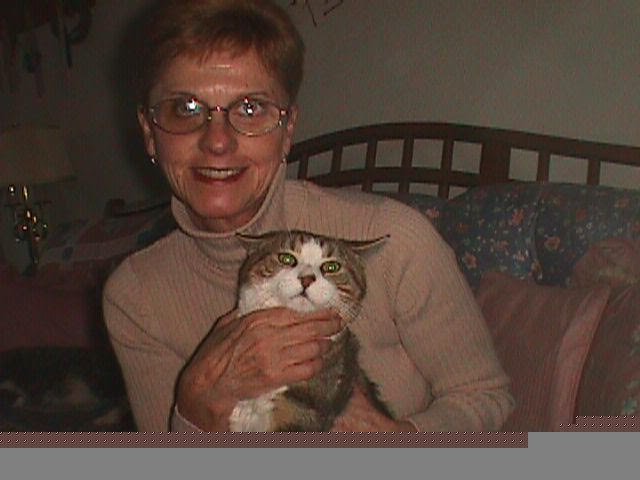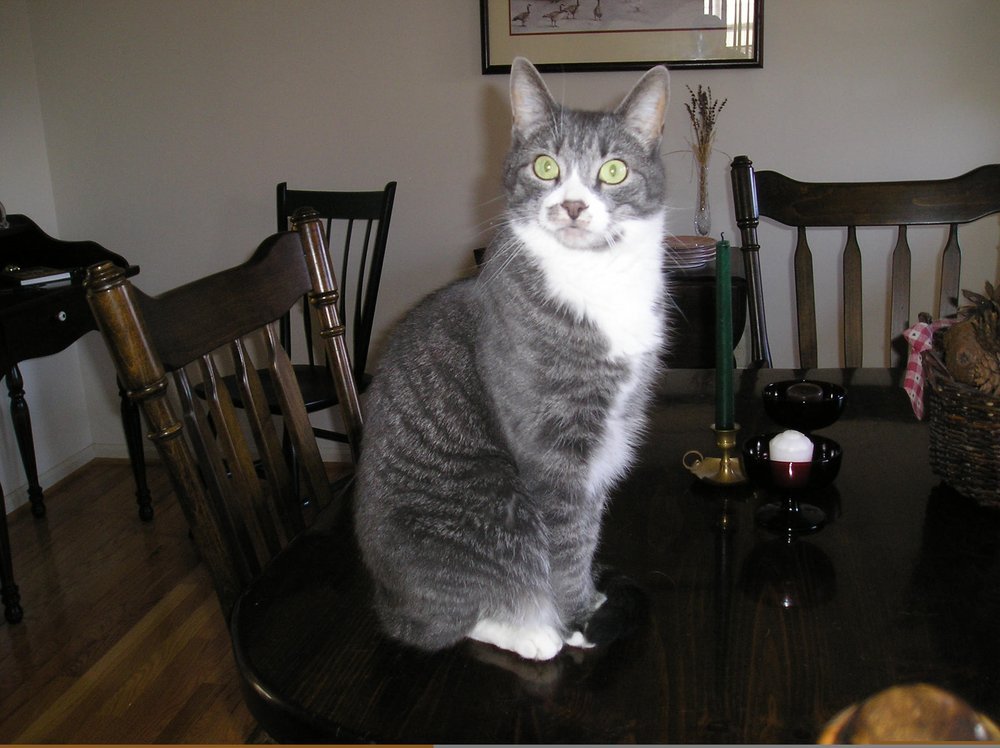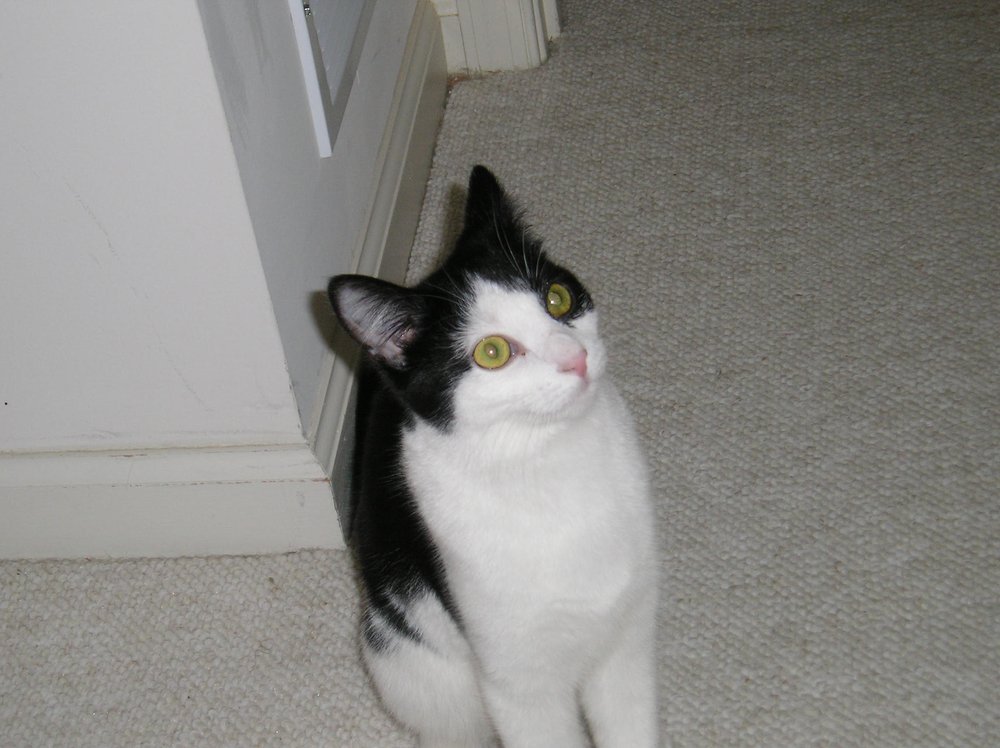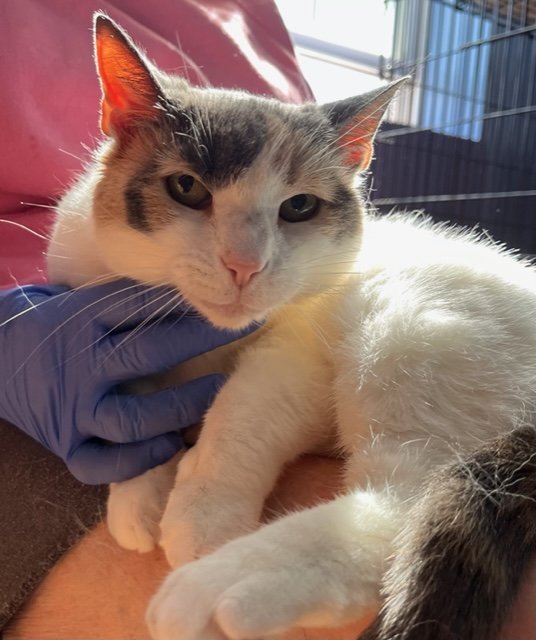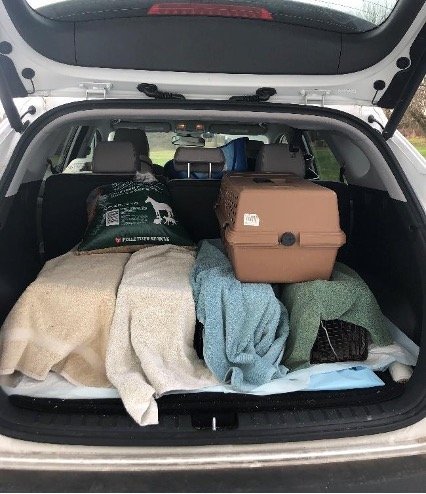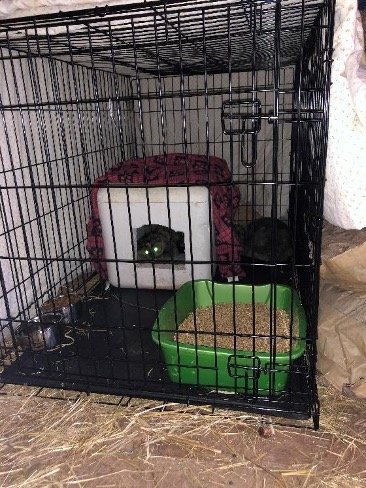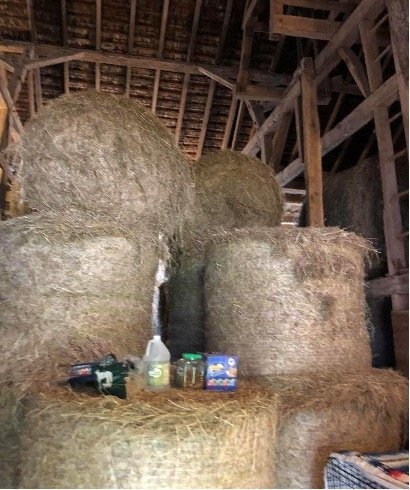2022 Spring News
Inside This Issue
Leave No Mom Behind
The Dangers of Bug Spray
Our Barn Cat Program
A Message From Our President
Volunteer Spotlight: Sharon Firda
Cat of the Month: Libby
Help for Peaches the Cat
I Just Saw A Stray Cat. What Do I Do?
I am here to officially ring in kitten season. Our volunteers are already busy answering calls from concerned people all over Montgomery and Bucks counties. It happens all the time, and maybe it’s even happening to you now: a cat or a mama and her kittens wander into your yard. What should you do?
Well, Stray Cat Blues has an answer for that! While our mission is to save as many cats and kittens as possible, I also feel that we are educators, and we take our purpose very seriously. Our aim is to teach people about the biology and behavior of cats to stop over-breeding and to ensure every cat has a warm and loving home.
So what should you do when a cat meanders into your yard? We have a section on our website that guides you through the process, and we have an army of compassionate, dedicated volunteers to help. Plus, Stray Cat Blues recently hired Donna Forsthoffer, Director of Operations, and Katie Durkin, Operations Manager, to ensure that our volunteer operations run smoothly and efficiently.
The first step in the process is to fill out a Found A Cat form where we gather all the information about the cat. Then we’ll try to work with you to trap the cat and assess if the cat is better off being fixed and then returned (a humane process called Trap Neuter Return or TNR), or if the cat has the potential to be a pet. Ideally, a cat is friendly enough to get a glow-up, vaxed and vetted, and end up in a forever home. That is always our fervent hope. But for the cats who are not socialized, we believe strongly in neutering to curb overpopulation.
Kitten season is all year round, which makes our mission even stronger. Be on the lookout for cats or kittens. With Stray Cat Blues, we can help you make a difference.
Sincerely,
Dr. Stacy Borans
Stray Cat Blues, Inc. President
The Maven of North Wales
By Sheila Scanlon
Miss Molly, the kitty who started it all
It seemed simple enough. One day in 2004, Sharon Firda stopped by the PetSmart in North Wales to adopt a cat. Little did she know that she would soon be keeping track of all Stray Cat Blues adoptions—quite a feat considering that Sharon didn’t grow up with pets. So exactly how is it that Sharon became such an essential part of a cat rescue group? That’s where Molly comes in.
While living in their first house, Molly (a neighobr’s cat) stopped by to see Sharon and her husband, John, whenever they were around. Molly had been relegated to live outside because she didn’t get along with her owners’ other cat. When Molly began visiting Sharon and John more and more frequently—much to the mutual delight of all three—Sharon asked her neighbor if Molly could come live with them. The neighbor told Sharon to take her.
That was the start of Sharon’s love of all things feline.
After Molly passed away and Sharon had retired as a third-grade teacher, she and John knew they wanted another cat. That’s how they ended up at PetSmart that fateful day in 2004 when they adopted Max. Not long after, they decided they wanted a playmate for Max, so they adopted Teddy. Teddy had been returned to Stray Cat Blues because he was going outside his litter box. It was discovered that his neuter surgery had left something behind! He was neutered again, and that ended his litter box problems for good. Max and Teddy became fast friends, keeping their humans entertained well into their late teens.
Don’t let those ears fool you—Teddy was a love
It’s not easy to always look like you’ve been goosed, but Max pulled it off
It was while adopting Teddy and Max that Sharon volunteered to work at the PetSmart center for Stray Cat Blues on adoption days. Someone must have realized how highly organized Sharon is because she was asked to help with the adoption process. What started with her doing just a part of the process grew into Sharon becoming the person to handle all things adoption: from the time the applications come in until the cats have gone to their forever homes. It’s a complex process, but Sharon has managed to organize it all into a logical, computerized structure. She even has her own tech guru, John, when her Mac doesn’t work quite right!
Has there ever been a cat who could resist the rainbow wand? Becky wasn’t one of them
Rosebud! The camera’s this way!
Sharon is also an occasional foster mom for Stray Cat Blues. When Max and Teddy passed over the Rainbow Bridge, Sharon and John adopted two of their foster cats: Becky and Rosebud. Sadly, Becky recently passed away. Their sweet girl, Rosebud, is helping them through their sorrow.
Sharon diligently visits the cats at the North Wales PetSmart every day, schedules adoption visits, and is at the center every Saturday and Sunday to handle the adoptions personally. She puts together a weekly list of adoptions, each with a story that gets posted and promoted on Facebook.
I’ve been told that many in our rescue respectfully refer to Sharon as the “Maven of North Wales” because of her selfless dedication, and I can certainly understand why. Thank you for everything you do, Sharon!
Sheila Scanlon has been volunteering with Stray Cat Blues for over a year. After her early retirement, she worked as a pet sitter for four years. Her favorite client was a senile 21-year-old tabby who woke her up every hour of every night for a week because he thought it was dinner time. At least he was polite about it!
Meet Libby This Weekend At PetSmart
Come out to PetSmart in North Wales on Saturday, June 4th to meet Libby, one of our many amazing cats available for adoption. All this sweet senior girl wants is a loving home and a human to call her own.
Help Us Raise $5,000 For Peaches!
Last winter, we found a beautiful 10-year-old calico named Peaches. Our veterinarian said she was in overall great health, except for the benign tumor on her leg that would continue to grow and limit her mobility.
Thanks to the amazing team at Metropolitan Veterinary Associates, Peaches’ surgery was a success and she will soon be available for adoption
We understand that $5,000 is a lot to spend on one cat. All cats deserve to have a comfortable quality of life and this surgery made that possible for Peaches. Please donate to cover her medical expenses so we can continue helping other cats just like her!
Leave No Mom Behind
By Aimee Davis
Athena. World’s greatest mom cat.
Usually, when someone tells me he or she has found a kitten (because I am the type of person one tells this to), my first question is, “Where is its mom?”
Here’s the thing: kittens don’t exist in a vacuum. They are not delivered by the stork. Even though during kitten season it feels like they’re raining down all around you, they don’t come out of thin air. They come from mom cats. So where there is a kitten, there is usually a cat. It is my personal belief that no mom should be left behind.
This is where I tell you about Athena. Here’s a photo of the world’s greatest mom cat for reference.
Athena and her daughter Artemis. I’m sort of obsessed with these two.
The trapper who was working Athena’s community had been there for awhile, so she knows her whole life story. Athena’s mom was an owned cat that a previous tenant left behind. The owner of the property let her out and, as she was unspayed, she got pregnant and had a litter. Athena was part of that litter. Then, when Athena was probably only about 4 or 5 months old, she got pregnant. (Yes, it can happen that young.) Cats gestate for about 2 months, so at 6-7 months she gave birth. By the time she was trapped, her kittens were about 7 weeks old, so she was about 8-9 months old. If she hadn’t been trapped, she would have been in heat again and ready for another litter within a couple of weeks, repeating the vicious cycle.
P.s. say a big CONGRATULATIONS to Athena, the World’s Greatest Mom Cat on scoring a forever home!!!
When Athena came in, she weighed 4.5 pounds. I weighed her just as I weighed her kittens, in the same bucket placed on the same little food scale. Her 3 kittens weighed just under 2 pounds, about ready for spay and neuter surgery. They weighed not very much less than their mother. This 8-month-old kitten was essentially sacrificing her body and her health to keep her kittens alive. So, like I said: world’s best mom cat.
But the thing is, it shouldn’t have to be that way. If moms were properly cared for then it wouldn’t be that way. Not that Athena’s mom was left behind—she was eventually caught, spayed, and adopted out—but so many mom cats aren’t as fortunate. Adult cats that are left behind are the reason we have such a big kitten overpopulation problem. Mom cats can have at least 3 litters a year, averaging between 3-5 kittens per litter (but often more), which equates to… well, a lot of kittens. This is the tide we need to stem. This is the problem we must fix if we ever want to have any hope of ending the killing of kittens and cats in shelters across the country.
So if you find a kitten and want to reach out to a rescue for help (which is awesome), please keep your eyes peeled for mom, too. She’s out there, somewhere. And she needs your help more than you know.
Aimee Davis has photographed thousands of animals and fostered dozens and dozens of kittens and cats, as well as a few German shepherds. She currently volunteers with Stray Cat Blues and serves on its board.
The Bug Spray That Can Make Your Cat Sick
By Jessica Buck
As pet owners, we’re all aware of the threat of tick-borne illness, and it’s a threat we should take seriously. But with so many products on the market for both our four-legged friends and ourselves, it's important to choose your insect repellent wisely—especially since certain kinds can be fatal for cats.
Permethrins and pyrethrins, while very effective tick repellents, are highly toxic to cats. Exposure to even small quantities can cause severe and fatal poisoning. Cats are particularly sensitive to these chemicals because they lack the liver enzyme needed to break them down. That means the chemicals can build up in their bodies, causing serious illness.
Symptoms begin within 72 hours after exposure and can include muscle tremors and weakness, seizures, pupil dilation, fever, and even death. Immediate vet care is required after exposure to permethrin/pyrethrin.
Consider safer insect repellents or be sure to change your clothes and shower after application of permethrin/pyrethrin before re-entering a cat's environment. Never apply a repellent with permethrin or pyrethrin to your cat; only use a vet-recommended flea and tick preventative.
Learn more about the risk of Pyrethrin/Pyrethroid in cats at vcahospitals.com.
Jessica Buck has been a volunteer with Stray Cat Blues for two years, working as a TNR trapper and grant writer. Jess has two cats of her own—or should we say cheeses?—Colby Jack and Cheddar.
Beyond House Cats: Our Barn Cat Program
By Jan Hanover
Cuddly kittens are one thing. Those are the easy cases (well, as easy as fostering and finding the perfect forever home ever is!). But what about the feral cats who, through no fault of their own, were never socialized and therefore cannot be placed in an indoor home? What happens when those cats no longer have a safe colony to return to? Fortunately, Stray Cat Blues has an answer to help these forgotten souls. Through our Barn Cat Program, we can place them in barns, stores, breweries, storage facilities, or other nontraditional homes. A win-win situation! Here’s just one example of a true rescue story.
In November 2021, Stray Cat Blues received a request for six barn cats. The barn was in Bucks County, set on 100 acres where they raise many farm animals. The owners of the farm were looking for a way to naturally control rodents and thought barn cats were the perfect solution.
Packed up and ready for a new life!
Welcome to your new home!
A few weeks prior to this request, Stray Cat Blues answered a call through our website to help trap, neuter, and return (TNR) four cats. The cats were in a dangerous environment outside and could not go back to that situation after being spayed/neutered. They were not well socialized and consequently were not suitable for household adoption. TheStray Cat Blues trapper/foster took them in during their moment of need but did not know how to find them a suitable permanent home. Sometimes you just have to rescue first and figure things out later! At around the same time, the SPCA asked Stray Cat Bluesto take in two 6-month-old kittens (which would otherwise be euthanized) that similarly did not have enough socialization and would therefore not be suitable as indoor kitties. We had found our six barn cats! Six cats that previously would have suffered hard lives or faced euthanasia would instead now go to a large, comfortable barn, be free to roam, and live out their lives in a safe home catching mice!
Our first night in our new home
So many possible hiding spots!
Before placement into the barn home, in addition to spaying/neutering, the cats were given vaccinations, deworming, microchips, and tested for FIV/FeLV. Then the cats were acclimated to the barn for three weeks by staying in extra large dog crates so they could get used to their surroundings. The new owners established trust and taught them that this place would provide safety, food, and water. After those few weeks, they were finally let out of their cages to find safe places to hide and sleep in the barn. The owners continue to feed them wet and dry food to give them the energy they need to catch mice.
These previously unwanted stray cats may not seek affection from their caretakers like typical pets and usually hide when their humans are around, but the barn owners still see them (well, some more than others) and they are all doing well. These six lucky kitties are living their best lives thanks to The Barn Cat Program at Stray Cat Blues!
Temporary quarters for newly placed barn cats
While the majority of our operations are in Montgomery and Bucks County, we’ve also had successful barn cat placements in the surrounding counties of Chester and Lehigh:
Betsey was looking for a few barn cats in Macungie. She helps take care of an estate with a large barn where she keeps her horses. When we told her about cats needing to be removed from a local business, she was eager to help. We placed two cats initially. Once they were acclimated, we placed two more, until eventually there were six cats in total. They now all roam free on the property and come into the barn at night to stay warm.
Allyson recently bought a home in Spring City with her family. They have sheep, chickens, and ducks. They were looking for help to keep the rodents away. Fortunately for her, and some lucky kitties, we had the purr-fect solution! Four formerly unwanted cats are now happily living life on their terms, while doing a great job earning their keep.
These are but a few of the stories of people who stepped up for cats in need. Our volunteers devote hours of their time, and often their own resources, to make this program successful. We also very much count on the generous donations of our supporters to help cover the costs of vetting (spaying/neutering, vaccinating, deworming, microchipping, etc.) all of the cats we place in barn homes. If you’re interested in helping care for the barn cats waiting for placement at our Green Lane facility–and we would be grateful for the help!–please fill out an online application. In the remarks section, indicate that you are interested in caring for the barn cats.
Jan Hanover has been a volunteer with Stray Cat Blues since the official opening of Whiskers Way Station in 2018. She began as a housekeeper and socializer but has also taken on the occasional foster cat along the way. When Jan retired last year, she happily became part of the Whiskers Way Station Intake Team.





